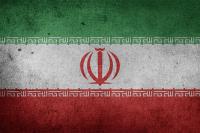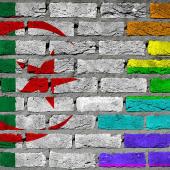Construction in Iran: the new landscape

The resumption of normal relations with Iran following the Implementation Day agreement and the subsequent lifting the majority of economic and financial sanctions imposed on the country has opened up exciting opportunities for trade.
One of the sectors that is set to drive Tehran’s economy is construction, which closed at $154 billion at the end of 2016 and is expected to grow at an annual compound growth rate of 6.1% over the next four years to reach $196 billion in 2020.
This marks a sharp improvement for a sector that, according to the Central Bank of Iran, grew at a CAGR of 3% over the previous three-year period 2013-15 and experienced a 32% decline in the number of construction permits issued within urban areas in the fiscal year 2014-15 compared to the previous year.
The sector’s growth is now driven primarily by the residential segment, which alone accounts for 45% of the market. Due to the severe housing shortage, demand stands at 1.5 million housing units per year while the current market is only able to supply 700,000 units. Iran is expected to see growth not only in the new housing segment but also in existing building renovation. This applies in particular to seismic retrofitting, a requirement that extends to around 50% of the country’s building stock.
With infrastructure playing a critical role in Iran’s plans to attract foreign investment into the country, the government has prioritized infrastructure development. The government is planning to nearly double the size of the country’s 13,000 km railway network to over 25,000 kilometres by 2025, as well as constructing dams, tunnels and new roads across the country (745 km of freeways, 5,626 km of motorways, and 2,970 km of main roads).
The property market in Tehran
According to the recent report published by the Central Bank of Iran and entitled "Trends in Tehran Housing Market", home sales in Tehran totalled 12,400 during the eight months of the fiscal year to 21 October, marking a 21% upturn compared with September 2016 and 4.1% year-on-year growth.
The report indicates that prices grew by 0.1% compared with September and 7.3% with respect to October 2015. The average price of residential units in the capital was $1,375 per m2 (44.1 million rials per m2), naturally with big differences between the poorer neighbourhoods in the southwest of the city ($667/m2) and the more affluent areas in district 5 in the northwest, which was the busiest for housing purchases in October.
Although the property market has not yet shown strong signs of recovery, experts maintain that the sector is in a “pre-boom” state.
Newly-built homes (built less than five years ago) accounted for 52% of the total deals, a drop of 3.5% compared with October 2015. Houses 16-20 years old accounted for 8.5% of the total sales (20% growth year-on-year).
Homes smaller than 80 square metres accounted for more than half (53.4%), while about 38% were sold for a total price of between $31,000 and $78,000.
The positive performance of the property market is largely attributable to Bank Maskan’s decision to cut mortgage rates to 9.5% (8% for housing units located in distressed urban areas), which has increased the purchasing power of the country’s population.
Did you find this article useful?
Join the CWW community to receive the most important news from the global ceramic industry every two weeks





















